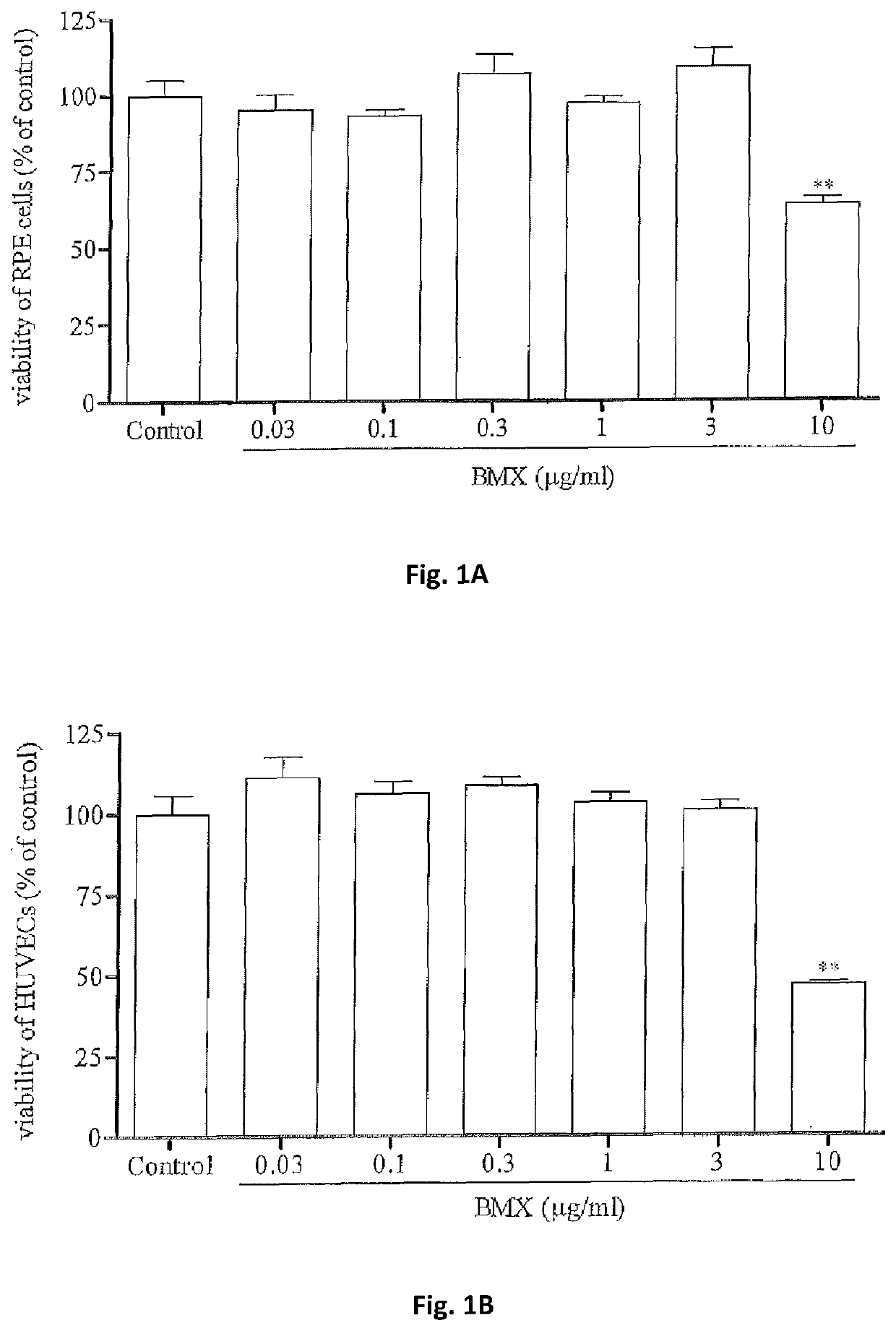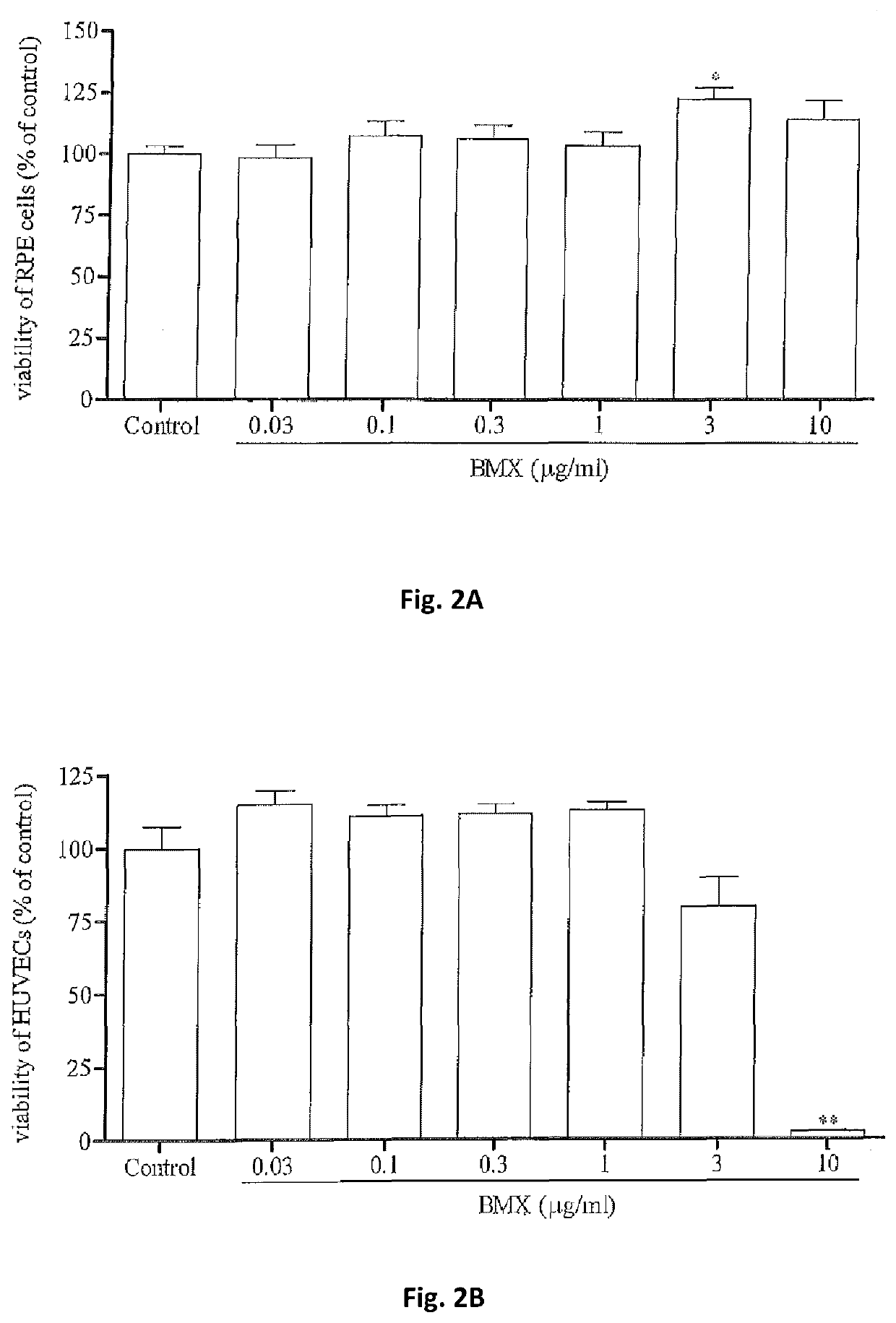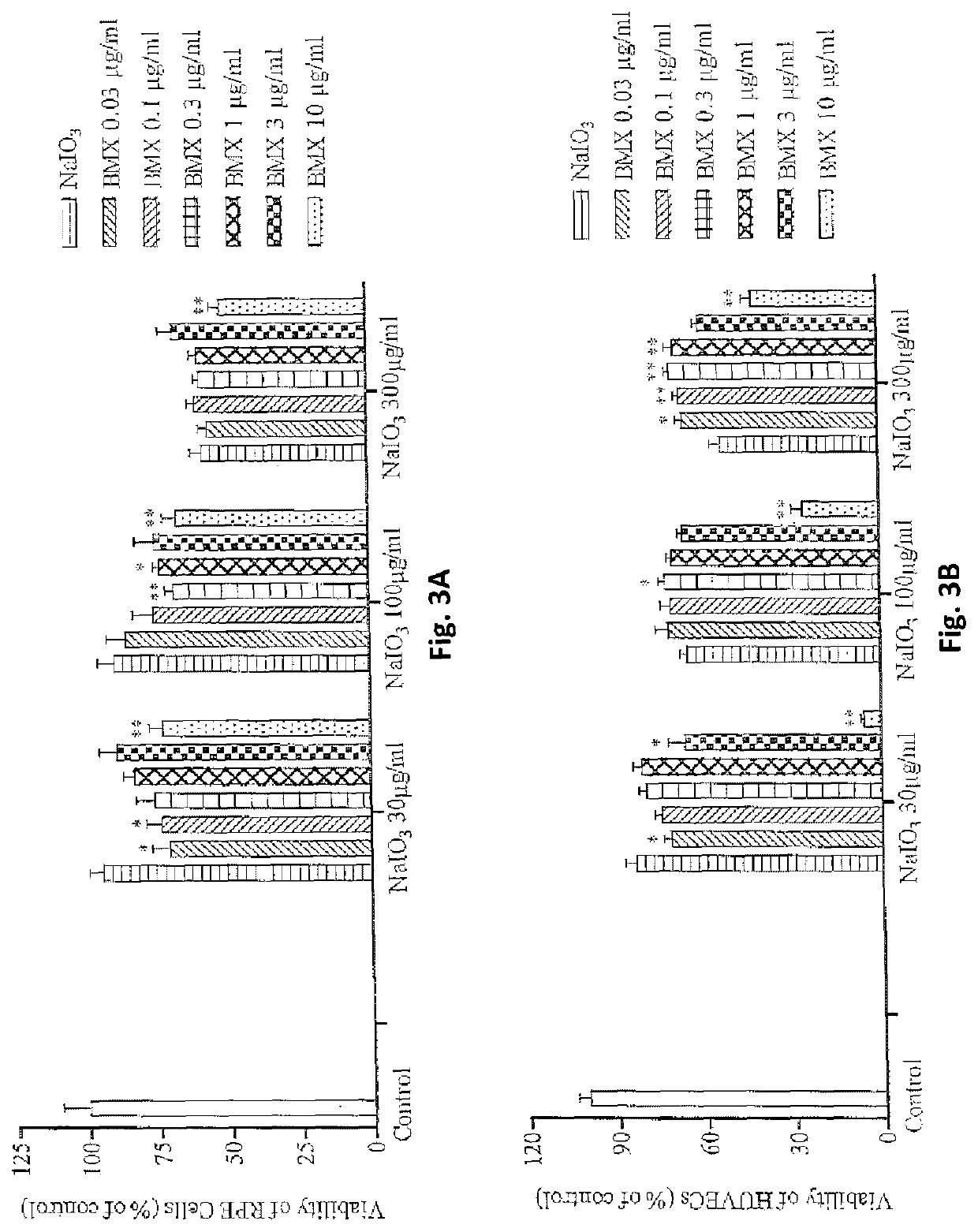Methods for treating ocular diseases
a technology for ocular diseases and ocular arteries, applied in the field of ocular arteries, can solve the problems of accumulating evidence, neovascularization, retinal edema, etc., and achieve the effect of preventing the breakdown of the blood eye barrier
- Summary
- Abstract
- Description
- Claims
- Application Information
AI Technical Summary
Benefits of technology
Problems solved by technology
Method used
Image
Examples
example 1
Oxidation
[0054]The mechanisms of the dysfunction or cell death of RPE may involve various factors, such as oxidative injury, degenerative changes in Bruch's membrane and damage to the choroidal vasculature. Different types of oxidative stress results in different patterns of oxidative damage to proteins in RPE cells and different patterns of loss of viability.
[0055]The retinal pigment epithelium (RPE) is a monolayer cell located between the retinal photoreceptors and the choroidal blood vessels, which plays a key role in the mechanical and metabolic support of the photoreceptors. In addition, RPE cell is the main element of some ocular diseases, such as proliferative vitreoretinopathy (PVR), uveitis and age related macular degeneration (AMD). AMD and other diseases, such as diabetic retinopathy (DR), are probably linked to the effects of oxygen radicals derived from light or metabolic reactions. Since the epithelium is very vulnerable to changes in oxygen tensions and oxygen radical...
example 2
nt of Ocular Blood Flow (OBF)
[0081]Improvement of ocular blood flow is essential in diabetic retinopathy, diabetic macular edema, glaucoma and ischemic eye diseases because the supply of most needed nutrients and oxygen can be maintained at normal or close to normal levels as a result. Although the blood flow of coronary is quite high at 2-8 ml / min / g tissue, the blood flow of choroid is even higher at 13 ml / min / g tissue. Chronic reduction in ocular blood flow may result in deterioration of visual field and optic nerve head whereas acute ischemia for more than 45 minutes might cause irreversible blindness.
[0082]Ocular blood flow is closely related to numerous eye diseases, including glaucoma, ischemic retinopathy, diabetic retinopathy and age-related macular degeneration (AMD). Thus, maintenance of normal ocular blood flow is essential to prevent / treat the aforementioned eye diseases.
[0083]2.1 Materials
[0084]0.5% alcaine was purchased commercially. A 20% sterilized hypertonic saline ...
example 3
Compound I on Blood-Retinal Barrier Breakdown in Streptozotocin-Induced Diabetic Macular Edema
[0093]Diabetic macular edema (DME) is the most common cause of visual loss in persons over 50 years of age in the developed world. Diabetes mellitus, the cause of DME, through subclinical inflammation is increasing in incidence and prevalence worldwide, becoming epidemic not only in the developed world, but in the underdeveloped world as well. This complication occurs mainly because of DR, a vascular complication of diabetic that frequently is diagnosed and treated later than it should, when the conditions that impair vision already took place. DR destroys vision via retinal neovascularization and macular edema. The pathophysiology of DME involves dilated capillaries, retinal microaneurysms, and loss of pericytes, with eventual impairment of the blood-retinal barrier (BRB). Breakdown of the BRB results in fluid leakage into the extracellular space, which disrupts macular structure and funct...
PUM
| Property | Measurement | Unit |
|---|---|---|
| humidity | aaaaa | aaaaa |
| humidity | aaaaa | aaaaa |
| humidity | aaaaa | aaaaa |
Abstract
Description
Claims
Application Information
 Login to View More
Login to View More - R&D
- Intellectual Property
- Life Sciences
- Materials
- Tech Scout
- Unparalleled Data Quality
- Higher Quality Content
- 60% Fewer Hallucinations
Browse by: Latest US Patents, China's latest patents, Technical Efficacy Thesaurus, Application Domain, Technology Topic, Popular Technical Reports.
© 2025 PatSnap. All rights reserved.Legal|Privacy policy|Modern Slavery Act Transparency Statement|Sitemap|About US| Contact US: help@patsnap.com



